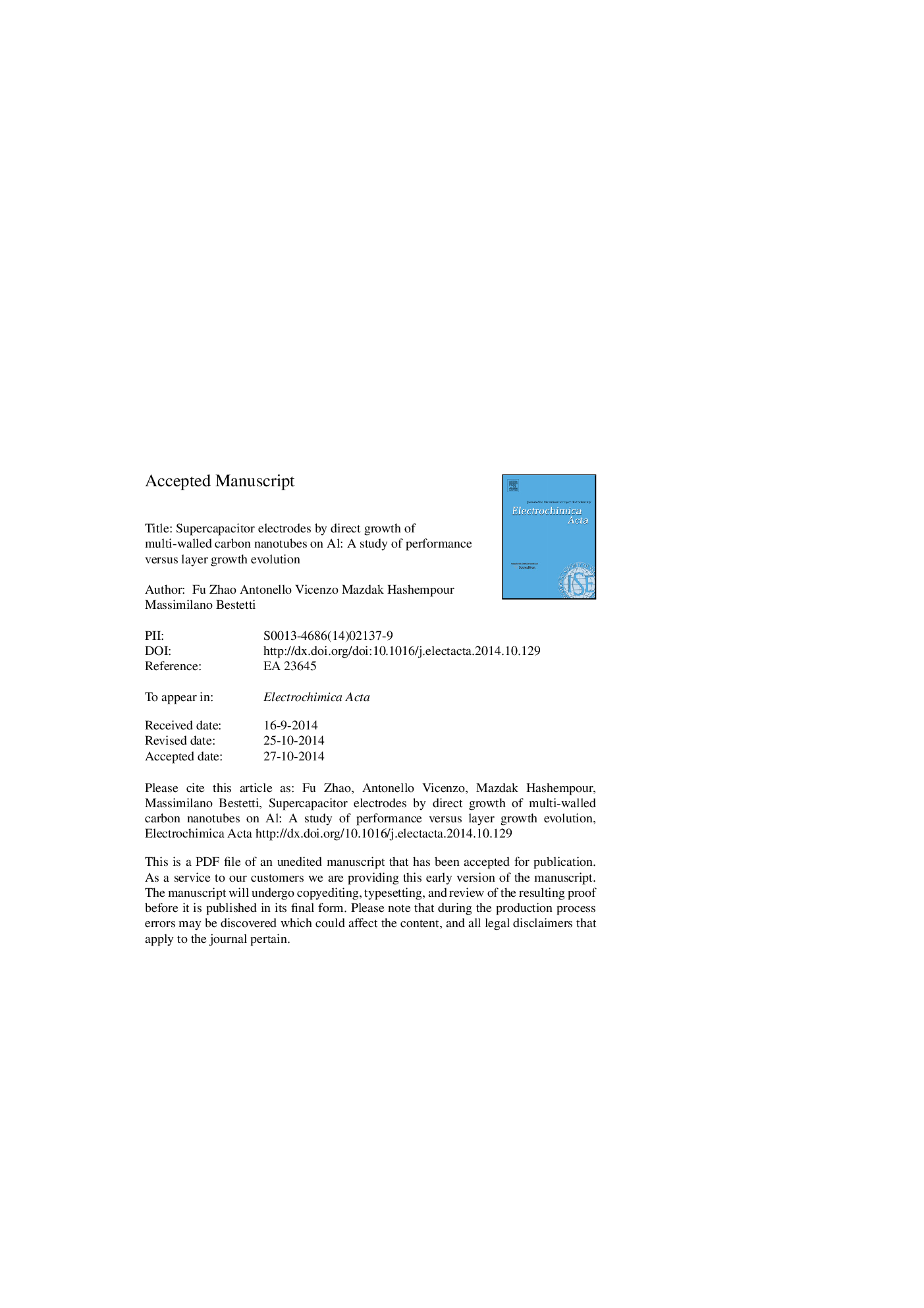| Article ID | Journal | Published Year | Pages | File Type |
|---|---|---|---|---|
| 6612682 | Electrochimica Acta | 2014 | 38 Pages |
Abstract
Supercapacitor electrodes were fabricated by direct growth of multi-walled carbon nanotubes (CNTs) on Al current collectors via a chemical vapor deposition process in the presence of a spin-coated Co-Mo catalyst. A detailed study of the dependence of the CNT layer structure and thickness on growth time set the basis for the assessment of supercapacitors assembled with the CNTs/Al electrodes. As the main features of the layer growth evolution, an increase in the population of finer CNTs and a shift from a random entanglement to a rough vertical alignment of nanotubes were noted with proceeding growth. The growth time influence on the performance of supercapacitors was in fact apparent. Particularly, the specific capacitance of CNTs/Al electrodes in 0.5 M K2SO4 aqueous electrolyte increased from 35 to 80 F gâ1 as the CNT layer thickness varied from 20 to 60 μm, with a concurrent loss in rate capability (knee frequency from 1 kHz to 60 Hz). The latter was excellent in general, arguably due to both a fast ion transport through the interconnected CNT network and a negligible contribution of the active layer/current collector contact to the equivalent series resistance (0.15-0.22 mΩ g), a distinct advantage of the direct growth fabrication method. Overall, a relatively simple process of direct growth of CNTs on Al foils is shown to be an effective method to fabricate supercapacitor electrodes, notably in the absence of special measures and processing steps finalized to a tight control of nanotubes growth and organization.
Related Topics
Physical Sciences and Engineering
Chemical Engineering
Chemical Engineering (General)
Authors
Fu Zhao, Antonello Vicenzo, Mazdak Hashempour, Massimiliano Bestetti,
